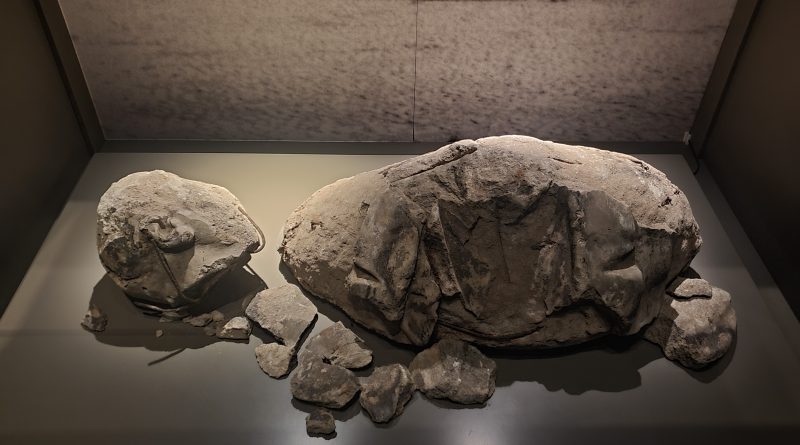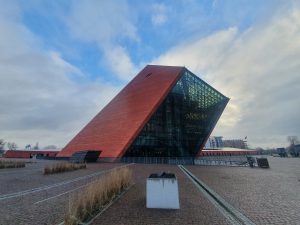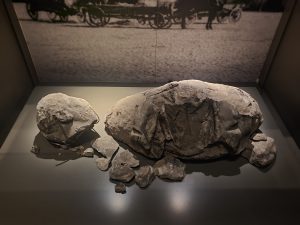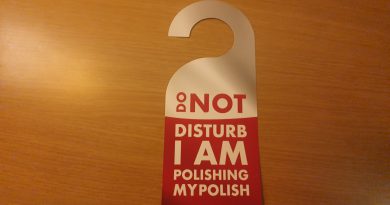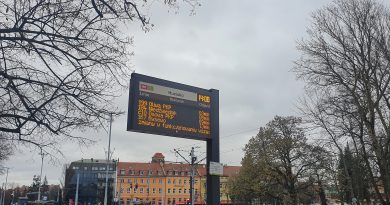Gdansk – Museum of the Second World War (Damaged Statue of Lenin)
This will be one of a series of posts of exhibits that particularly interested me in the Museum of the Second World War in Gdansk.
I thought it was interesting that the smashed remains of a statue had survived, as usually they’d be destroyed quite quickly. The story behind this is though tragic and it took place in Jedwabne, a small town in a rural area of Poland which isn’t a huge distance away from Białystok. Before the Second World War, the Jewish community made up around 40% of the town’s population. A pogrom took place on 10 July 1941, when 340 men, women and children were murdered, 300 of whom lost their lives after being placed in a barn which was set on fire. During the day, a number of the Jews had been ordered to destroy the Lenin statue on Dworna Street, which is why it was wrecked.
Much of this was left to history until 2001 when a exhumation of the bodies at the site was undertaken, when two mass graves were found, as well as the remains of the Lenin statue. There is all manner of controversy about whether the murderers were Polish or German and Aleksander Kwaśniewski, the then Polish President, apologised for any involvement by the Poles. Political arguments have ensued since saying that the Polish shouldn’t have apologised, it was nothing to do with them. There’s an interesting article at https://polin.pl/en/news/2016/07/09/78-anniversary-of-the-jedwabne-pogrom about the excavations and the timeline of events behind it.
Either way, this makes this statue more remarkable, as it was brought down that was part of an act of mass murder and it was then buried. It has been excavated from a war grave and brought here to the museum, part of the story that led to the destruction of an entire Jewish community. The site is unlikely to be dug again so that the graves can remain intact, so this is the only piece of the story that is left visible, the statue which once stood in the market square.

